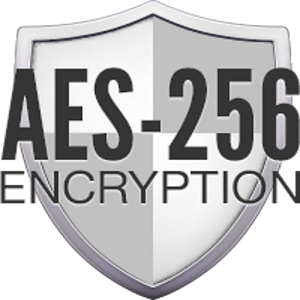This blog post shows how to encrypt and decrypt the payload of the message using Apache Camel. The cryptografic algorithm used in this example is AES-256 since this was an explicit request from security. The key used in the example was obtained from a keystore.
For extra security purposes AES encryption can be extended by using a so called Initialization Vector, which is similar as a NONCE a random number used per request. In this example a random 16 bit byte[] is used.
For more information about AES encryption: https://en.wikipedia.org/wiki/Advanced_Encryption_Standard
For more information about Initialization Vectors: https://en.wikipedia.org/wiki/Initialization_vector
To encrypt and decrypt messages Camel has made an abstraction independend of the algorithm used for encryption and decryption. This abstraction is called the CryptoDataFormat and can be used as any other data format. The CryptoDataFormat is well documented here: http://camel.apache.org/crypto.html However, the use with the AES-256 encryption algorithm is less well documented so, hopefully this post helps someone.
Generating the key and the keystore
The first step is to generate the key we are going to use for encryption AND decryption (remember this is symmetric encryption, meaning the same key is used for encryption als for decryption opposed to PKI which is an assymmetric encryption technique).
For generating the key we can use keytool. The example below I conviently borrowed from this blogpost: https://dzone.com/articles/aes-256-encryption-java-and
keytool -genseckey -keystore aes-keystore.jck -storetype jceks -storepass mystorepass -keyalg AES -keysize 256 -alias jceksaes -keypass mykeypass
To retrieve the key from the keystore I created some helper method, nothing special so far.
public static Key getKeyFromKeystore(KeyConfig keyConfig) {
String keystorePass = keyConfig.getKeystorePass();
String alias = keyConfig.getAlias();
String keyPass = keyConfig.getKeyPass();
String keystoreLocation = keyConfig.getKeystoreLocation();
String keystoreType = keyConfig.getKeystoreType();
InputStream keystoreStream = null;
KeyStore keystore = null;
Key key = null ;
try {
keystoreStream = new FileInputStream(keystoreLocation);
keystore = KeyStore.getInstance(keystoreType);
keystore.load(keystoreStream, keystorePass.toCharArray());
if (!keystore.containsAlias(alias)) {
throw new RuntimeException("Alias for key not found");
}
key = keystore.getKey(alias, keyPass.toCharArray());
} catch (Exception e) {
e.printStackTrace();
}
return key;
}
The KeyConfig object is just a POJO containing some String values retrieved from a propertyfile.
Since we are going to use an Initialization Vector for extra security we create a helper method for this as well, which returns a 16 bit byte array:
public static byte[] generateIV() {
byte[] iv = new byte[16];
new Random().nextBytes(iv);
return iv;
}
With the helper methods in place we can turn our attention to some Camel code…
Encrypting and decrypting using a Camel Route
The first thing we need is a CryptoDataFormat. Since we are using CDI for the bootstrapping we are going to use a PostConstruct annotated method to create a CryptoDataFormat. The trick is to set the encryption algorithm to “AES/CBC/PKCS5Padding” and enter a AES-256 key.
@PostConstruct
public void setupEncryption() {
cryptoFormat = new CryptoDataFormat("AES/CBC/PKCS5Padding", EncryptionUtils.getKeyFromKeystore(keyConfig), "SunJCE");
}
When using a CryptoDataFormat in Apache Camel we can simply use the marshal and unmarshal statements within the Camel route. However, since we are creating a message specific Initialization Vector we need to set in as well. For this we can use the helper method we created earlier. Another way would be to use a proccessor.
.setHeader("iv", method("nl.rubix.eos.poc.util.EncryptionUtils", "generateIV"))
.bean(cryptoFormat, "setInitializationVector(${header.iv})")
.marshal(cryptoFormat)
Since the example uses the same instance of the CryptoDataFormat decryption is as simple as:
.unmarshal(cryptoFormat)
In practice it won’t often be feasible to use the same intance of the CryptoDataFormat for both encryption and decrypion. When decrypting the exact same key and Initialization Vector must be used to initialize the CryptoDataFormat instance used for decryption as was used for encryption. Since this is symmetric encryption. The key used for encrypion must be available to the party which performs the decryption. This opposed to assymmetric public/private key signage. This is inherently part of the AES encryption protocol.
The complete code repo can be found here: 
java.security.InvalidKeyException: Illegal key size
For reasons unknown to mankind Oracle decided not to include key sizes of 256 in the standard JRE despite the fact we are living in the 21st century. This results in a Caused by: java.security.InvalidKeyException: Illegal key size exception. To resolve this the so called “Unlimited Strength Juristriction Policy” files must be downloaded and extracted to the JRE.
Since Oracle has a tendency to change download links it won’t be posted here. But searching the internet will provide plenty of examples on how to download and install.




